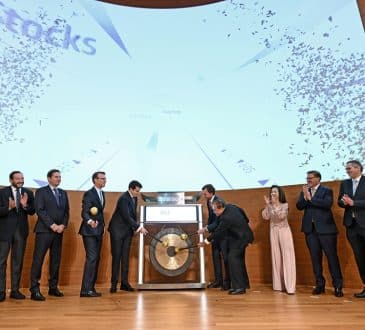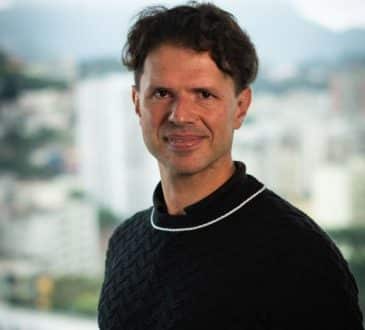Are Virtual Workplaces the Future of the Office?

In a recent conversation with Vishal Punwani, CEO and co-founder of SoWork, we explored the innovative realm of virtual workplaces—a concept that has gained remarkable traction in the post-pandemic era. Vishal shared key insights into how virtual environments can transform the dynamics of remote and hybrid work.
A Solution Born of Necessity
During the early tumult of the pandemic, as businesses worldwide scrambled to adapt, Vishal faced a stark realization. His team, formerly cohesive and dynamic, was suddenly fragmented—scattered across various locations, struggling to maintain the vibrant interaction that had fueled their productivity. The digital tools at their disposal, such as Slack and Zoom, proved inadequate for preserving the depth of collaboration and esprit de corps that had defined their pre-pandemic operations.
This challenge sparked a creative solution, drawing from Vishal’s personal experiences with the online game World of Warcraft. In this game, despite the physical distance between players, a strong sense of community and collaboration was maintained through immersive, engaging interactions. This contrast between the digital disconnect experienced by his team and the virtual connection felt in gaming led to an epiphany. Vishal envisioned a virtual workspace that could replicate the engaging and interactive essence of a physical office but enhanced with the capabilities of digital technology. He saw the potential for gamification elements to foster a sense of presence and teamwork, even when team members were miles apart.
The foundational concept for SoWork was thus born out of necessity but fueled by the vision to transcend traditional digital communication barriers. By leveraging advanced technology and the principles of game design, SoWork aimed to create a platform that not only addressed the logistical challenges of remote work but also captured the human element of working together in a shared space. This approach promised to revolutionize the concept of remote collaboration, making it as natural and effective as face-to-face interactions, thereby setting a new standard for what virtual workplaces could achieve.
The Challenge of Adoption
Navigating the initial resistance to adopting virtual workspaces is a significant challenge that SoWork faces. Many business leaders view the introduction of a new digital tool with skepticism, primarily fearing that it may add complexity to their existing workflows rather than streamline them. This apprehension is compounded by a general reluctance to overhaul traditional work models that are perceived as less risky and more straightforward.
Vishal shared that the key to overcoming this skepticism lies in demonstrating the clear, tangible benefits that virtual workplaces bring to team dynamics and operational efficiency. For instance, by illustrating how virtual workspaces can significantly speed up decision-making processes and enhance team cohesion, Vishal showcases its potential to transform not just the mode of working, but the very outcomes of these efforts. Enhanced productivity and more agile responses to market changes are compelling advantages that can sway hesitant leaders.
Moreover, SoWork actively targets forward-thinking leaders who are already attuned to the challenges of remote work and are searching for innovative solutions to enhance their teams’ effectiveness. By aligning SoWork’s offerings with the strategic needs of these leaders, Vishal aims to foster early adoption and create a ripple effect across industries. Demonstrations and case studies are used to highlight how seamlessly SoWork integrates into daily operations, thereby assuaging fears of technological overload and emphasizing its user-friendly design.
The Role of Generative AI
The strategic incorporation of generative AI into SoWork’s platform stands as a significant leap forward in redefining team collaboration. Vishal’s vision extends beyond using AI for rudimentary tasks. Currently, SoWork’s AI handles mundane but critical tasks like summarizing meetings and generating actionable tasks. This automation frees team members from repetitive administrative duties, allowing them to focus on more creative and strategic activities. This shift not only boosts individual productivity but also enhances the collective intelligence of the workforce.
As teams become more accustomed to AI’s benefits, SoWork plans to introduce more advanced capabilities. These include integrating AI deeper into the workflow to predict project outcomes, optimize resource allocation, and even provide strategic recommendations based on data analysis. This proactive use of AI in operational contexts aims to transform how teams interact with each other and their work environment, creating a more dynamic and responsive workspace.
Vishal hinted at even more transformative phases of AI integration, which could fundamentally alter team dynamics and decision-making processes. These developments promise to leverage AI not just as a tool for administrative efficiency, but as a core component of strategic planning and innovation within teams. By doing so, SoWork is not only enhancing the functionality of virtual workspaces but is also paving the way for a new era of work where technology and human ingenuity are seamlessly integrated for optimal performance and creativity.
The Future of Remote Work
As our discussion neared its conclusion, Vishal shared his vision for the future of remote work, which he believes will continue to evolve and expand. The increasing reliance on remote setups demands innovative solutions, which not only facilitate seamless operations but also forge a sense of community and shared purpose among dispersed teams. Vishal’s perspective is clear: the future of work isn’t just about location independence but about creating environments that foster real connections and enable high-performance teamwork, regardless of physical boundaries. Based on our conversation, I will strongly encourage client companies I work with to help them adopt flexible work models to consider virtual workplaces as a key tool in their collaboration and teamwork arsenal.
——
Have you read it?
Highest-paid CEOs in America.
Countries With Lowest Rate of Economic Growth in 5 Years.
Countries Most in Debt to China.
Most Attractive Cities for Global Talent.
Largest economies in the world by Share of Global GDP.
Bring the best of the CEOWORLD magazine's global journalism to audiences in the United States and around the world. - Add CEOWORLD magazine to your Google News feed.
Follow CEOWORLD magazine headlines on: Google News, LinkedIn, Twitter, and Facebook.
Copyright 2025 The CEOWORLD magazine. All rights reserved. This material (and any extract from it) must not be copied, redistributed or placed on any website, without CEOWORLD magazine' prior written consent. For media queries, please contact: info@ceoworld.biz








